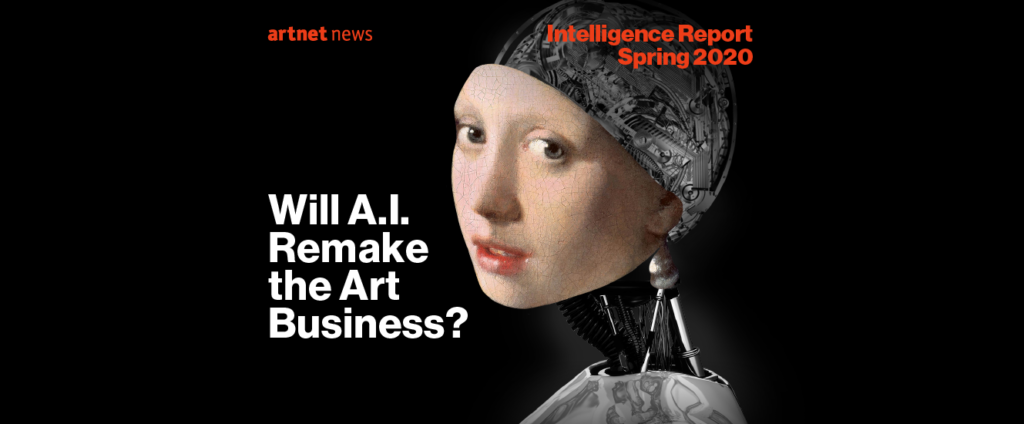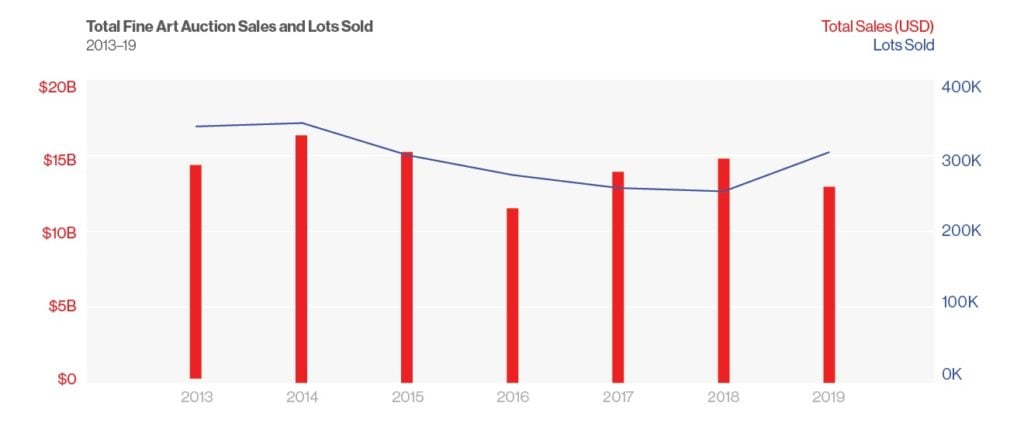The Intelligence Report
Introducing: The Artnet Intelligence Report, Spring 2020 Edition
From a breakdown of the market’s performance in 2019 to a gripping account of how A.I. could transform the art business, here are the highlights.

From a breakdown of the market’s performance in 2019 to a gripping account of how A.I. could transform the art business, here are the highlights.

Artnet News

In the art business, perhaps more than in almost any other industry, information is power—and when it comes to the value of artworks, good information is especially hard to come by. An oft-repeated legend has it that Larry Gagosian rose to prominence in part by securing invitations to collectors’ homes, memorizing the trophies on display, and using that knowledge to generate third-party offers high enough to literally sell the artworks off their walls.
So it’s not entirely surprising that many of the stories in this issue investigate how data—a lack of it, an abundance of it, or a new, high-tech version of it—has the potential to shake the art market’s very foundation.
To examine the dark side of information asymmetry, we spelunk into the murky story of Inigo Philbrick, a former wunderkind dealmaker who capitalized on the market’s opacity—specifically the fact that buyers and sellers typically have no idea who is on the opposite end of a deal—to allegedly swindle his clients to the tune of tens of millions of dollars.
We also explore how artificial intelligence could rewire the art market as a much more transparent, highly efficient industry—but only, perhaps, if the parties who have historically hoarded information are willing to share it for the good of the whole.
In these pages, you’ll also find an eye-opening account of how professionals with a very specialized knowledge of one industry—banking—are trying to break down the traditional walls of the art world. Plus, we have a primer on three dynamic art-market hubs in Asia that deserve a closer look, particularly as China and, yes, Hong Kong are becoming less hospitable to Western business.
And, as always, you’ll get an insight-packed account of the biggest moments in the art industry over the past year, with unparalleled data, as well as analysis to explain what it all means. Because, as anyone active in the art world knows, you are only as good as your most up-to-date information—and the times they are a changin’.
– Marketplace
• Expert predictions for what’s ahead in 2020
• Leading collectors on what they buy (and why)
• The top 10 lots of 2019 in every major category—explained
– Your A-to-Z Guide to A.I. in the Art Market by Tim Schneider
Industries from transportation to entertainment have been transformed by artificial intelligence—we explain how it could change the way the art world does business, too.
– Is This the Greatest Contemporary-Art Swindle Ever? by Eileen Kinsella
Inigo Philbrick allegedly conned the art industry out of tens of millions of dollars. Here’s how he got away with it for so long—and why it’s a symptom of a larger problem.
– The Asian Art Market Is More Than Hong Kong (or China) by Vivienne Chow
Beyond the People’s Republic, major art markets are blossoming across the region. We break down everything you need to know about three of the most dynamic hubs on the rise.
– How Masters of the Universe Became Masters of the Art World by Nate Freeman
What happens when a market that used to be helmed by patrician connoisseurs is overrun with profit-hungry bankers from Goldman Sachs and J.P. Morgan?
